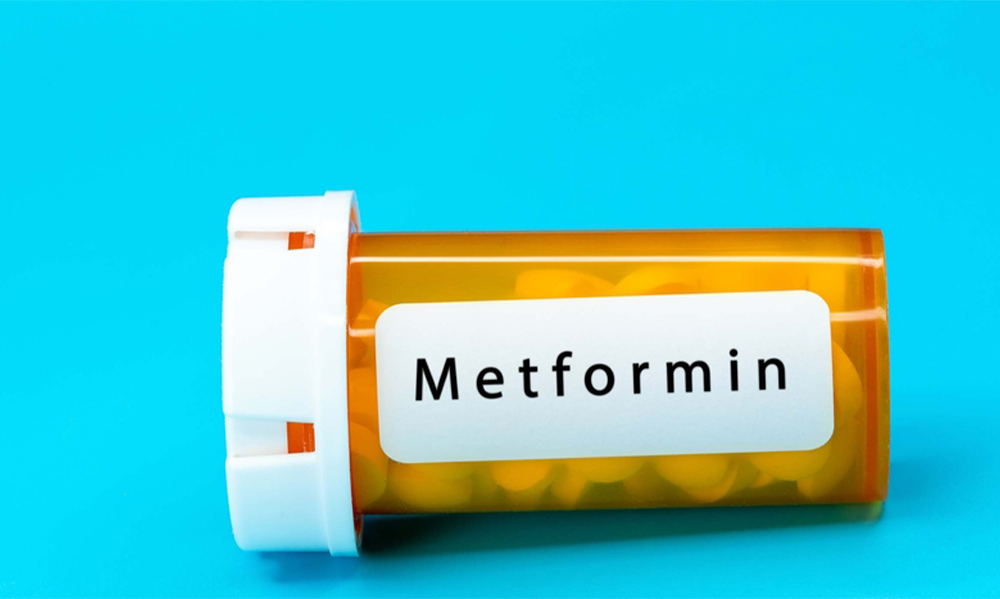
What Are the Top Signs Metformin Is Not Working?
Metformin is generally great for healthy blood sugar control because how it delays the liver from releasing blood sugar. There are also extended-release variants that allow for more convenient dosing and enhanced gastrointestinal (GI) tolerability.
However, being a mild medication makes it less effective in controlling blood sugar in the long run. Patients who eat a lot of carbs and don’t take dieting seriously are the major population where metformin therapy may eventually become ineffective in controlling blood sugar.
In diabetes infancy, the drug controls blood sugar and is expected to continue when there’s control over other factors. After taking metformin, some patients may experience a slight rise in blood sugar. However, this phenomenon is only temporary and usually resolves with time.
Patients may also experience an occasional rise in blood sugar following a major carb meal while on metformin medication. Still, this isn’t considered a cause for concern as long as one implements appropriate dieting and exercise and there’s no regular increase in blood sugar. The occasional glucose increase can’t be considered a sign of metformin failing to work or control blood sugar long-term.
People with diabetes may suspect their metformin may be becoming unreliable if there’s an increase in their blood sugar levels despite taking their doctor-prescribed doses and not eating any major carbs. They’re to become more watchful if they don’t follow a healthy lifestyle in addition to noticing these changes. This is the first sign that metformin may become ineffective in blood sugar control.
Most doctors recommend that patients experiencing this first sign give up unhealthy habits. They’re also more likely to increase the metformin dose. If there’s a lifestyle change, most specialists must adjust the doses to the previous prescription.
If patients don’t implement changes to diet guides and unhealthy eating continues, the metformin effect will only keep waning. If the rise in blood sugar continues, more apparent signs and symptoms will appear, reinforcing the continually diminishing metformin effectiveness. Increasing doses at the advanced stages won’t control blood sugar; instead, patients may risk abusing the medication.
The latter symptoms that patients are likely to experience include:
Blurred Vision
Despite taking metformin, blurry vision and dizziness are signs that the drug is not in any way effective.
Fatigue
Feeling weak without doing any strenuous task is a major sign that metformin medication has become less effective.
Frequent Urination
Urinating more frequently than usual is a latter symptom of advanced symptoms. So, if you’re experiencing it despite taking metformin, it’s a clear sign that the drug is ineffective and you’re leaning towards an advanced diabetes stage.
Headache
Headache is usually a result of stress. However, diabetes can also induce it, and when this happens, it’s a clear indication that metformin medication is no longer working as it should. Diabetes-induced headaches usually manifest as unexplained aches not caused by illness or physical exhaustion.
Increased Hunger
Diabetes causes hunger in people as it progresses. While this is tricky for people to see as a symptom of metformin not working, this sign becomes more apparent when considering certain situations. If there’s a noticeable change in appetite, such as a need to eat at times contrary to normal, it could be a sign of poor metformin effectiveness.
Increased Thirst
Frequent urination causes excessive passing of liquid, resulting in increased thirst. While this isn’t a problem at diabetes inception, patients that take metformin will experience it if they don’t implement other important diabetes management tips.
Nausea or Vomiting
Vomiting and nausea are other serious symptoms of diabetes and signify that metformin is no longer working as it should.
Feeling weak without doing any strenuous task is a major sign that metformin medication has become less effective.
Additional Notes
All of the above signs are the red lights that tell people with diabetes subjected to metformin treatments that their medication is no longer effective. The concerning fact about this situation is that several side effects come with metformin failure.
One of the more severe side effects is the metformin-associated lactic acidosis triggered by excessive metformin use. People with diabetes who consume metformin and abuse it to control their worsening blood sugar spikes usually end up with high lactic acid levels. More concerning is that their blood sugar remains high despite excessive drug intake complications.
Also, metformin overdose could alter the liver’s ability to function properly. An overdose is extremely likely as the drug starts to become significantly ineffective. The strain on the liver increases the risk of diabetic ketoacidosis — another complication that comes with excessively high blood sugar and pressure on the liver. Therefore, metformin could trigger a paradoxical reaction where it contributes to diabetes if not taken in moderation.
Natural Diabetes Management Tips to Adopt When Metformin Stops Working

When metformin stops working, opting for healthy living is the best step to take. That way, you won’t need to expose yourself to more medications.
Adopting natural healthy steps is the best way to handle diabetes blood sugar. With proper natural and disciplined management, people with diabetes will barely even need to take any drug—including metformin—to suppress or reduce blood sugar levels.
A healthy diet is still the best way to combat weight gain and reduce blood sugar levels. But that’s not the only healthy choice that people can make. This section highlights more options to go for.
Choose Healthy Plant Foods
Plant food supplies carbohydrates, minerals, and vitamins in your diet. Carbohydrates provide the body with energy and fiber, including starch and sugar.
Dietary fiber or roughage is a part of plant food the body can’t absorb. Foods rich in fiber reduce your diabetic risk and encourage weight loss. Eat a variety of food high in fiber, including:
- Non-starchy vegetables like cauliflower, leafy greens, and broccoli
- Whole grains like quinoa, whole oats, bread, whole grain rice, and whole-wheat pasta
- Legumes like chickpeas, lentils, and beans
- Fruits from trees, tomatoes, and peppers
The Importance of Fiber
- Fiber slows down the body’s absorption of sugar and reduces blood sugar
- It helps you get full quickly with less food as it’s energy-rich
- It controls heart disease risk factors like inflammation and blood pressure
- Fiber interferes with how the body absorbs cholesterol and dietary fat
Exercise
Exercising has many benefits, including reducing blood sugar and weight loss. These both help reduce or eliminate your risk of having type 2 diabetes. Just 30 minutes of exercise for 5 days of the week will benefit your health significantly. Various types of exercise will help you stay active, including resistance and aerobic exercise.
Resistance Exercise
Engaging in resistance exercise three times weekly improves your balance and strength and helps you stay active. Examples of resistance training are calisthenics, weightlifting, and yoga.
Aerobic Exercise
As little as 30 minutes (or more) of moderate or vigorous aerobic exercise like running, biking, swimming, or brisk walking (for 150 minutes) every week will help reduce your diabetic risk.
Other Necessary Steps to Implement When Metformin Stops Working

Research has established that a healthy lifestyle can help reduce blood sugar levels and even help people beat diabetes. Since the body finds it difficult to produce insulin, healthy habits can help people with the condition increase sensitivity of the limited insulin while reducing blood sugar spikes by taking effective steps.
However, since healthy living is difficult for some people due to certain circumstances, there are other ways to handle the condition. Here are some of the steps that people with diabetes can adopt:
Opt for Other Diabetes Medications
There are several medications that people with diabetes can go for once metformin stops working. These medications come in both oral and injectable forms. They’re much more effective than metformin for controlling blood sugar and are usually recommended for the latter stages of diabetes.
The GLP-1 RAs, for example, is one of the more effective treatments that health experts usually recommend patients opt for when they have a worsening case of diabetes that diabetes can no longer handle.
The GLP-1 RA class is a group of injectable medications prescribed by a diabetes specialist to control blood sugar for both the short and long term. Classified into short-acting and long-acting variants, the former help control blood sugar spikes for only some hours, while the long-acting ones can regulate spikes for up to weeks.
However, it’s important to know that while the GLP-1 RAs are incredibly effective, taking them simply gives a red alert that there’s an underlying need to prioritize healthy lifestyle practices and habits.
Quit Smoking and Drink Alcohol Moderately
Smokers have a 30–40% chance of developing type 2 diabetes, which is only higher among heavy smokers. Some research suggests that moderate consumption of alcohol reduces the risk of having type 2 diabetes while excess alcohol increases the risk. Better still, people who don’t drink alcohol or smoke can easily prevent or reduce their diabetic risk.
Consider Diabetes Prevention Programs
If you’re having a worsening case of diabetes such that it’s almost impossible for you to go through the journey alone, then a diabetes prevention program (DPP) may be the best option. While a healthcare provider is good for recommending management tips that you should opt for, diabetes prevention program outcomes help people successfully lower blood sugar levels by guiding them all the way.
These programs are government-organized health services that accommodate diabetes patients and help them achieve recovery. The success rate of DPPs is higher than singular individual attempts to reduce diabetes. So, opting for one is not a bad idea if you see the need to.
Concluding Words

Metformin is a standard diabetes management drug. However, it does need several complementary management tips to remain effective. When these tips aren’t implemented, people with diabetes have a higher chance of being worse off than before.
This guide has considered what could happen to someone with diabetes who depends on metformin when the drug becomes ineffective. We outlined different symptoms and signs to let people with diabetes know when their medication is no longer effective, enabling them to take more effective steps.
This guide outlined a comprehensive number of steps, including proven medical therapy and other natural methods. Dieting, as expected, stood out as it’s the major determinant of how much glucose the body can produce.
Since high glycemic carbs are the major cause of high blood sugar, leading to advanced diabetes complications, dieting is widely accepted as the most cost-efficient and effective way to prevent the consequences. However, it’s one thing to know the importance of dieting and another to implement it.
Many people generally find dieting challenging to implement, which is why many resources are currently available to help people stick to healthy meals. One of the best resources is diabetes management meal apps. These apps suggest and recommend the best diabetes-friendly variations to eat.
Our Klinio app is one of the top meal apps to go for. Our app gathers different healthy meals and recipes from updated global sources to give clients the best food to eat. It also helps users set a health routine that they can always follow to keep a healthy diet routine and reduce the effect of blood sugar.







